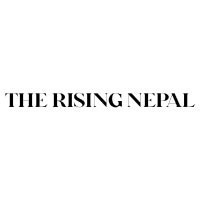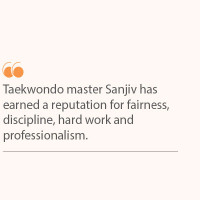- Saturday, 13 December 2025
Transform Medical Learning
Medical science is one of the most extensive and demanding courses globally, requiring years of dedication, patience, significant financial investment, and hard work. For medical students in Nepal, the journey is particularly challenging due to the traditional methods still prevalent in many institutions. However, modern technologies and tools can significantly ease this journey, offering new ways to learn and practice medicine more effectively.
Tablets have revolutionised how medical students manage their study materials. By organising books in digital files and folders, students can significantly reduce the burden of carrying bulky medical textbooks, especially during exams. The ability to scribble and highlight on digital pages mimics the feel of real paper, and the zoom feature allows for better examination of microscopic diagrams and small text. Tablets also help in organising practical videos, atlases, and photos of real specimens and models, aiding photographic memory. Lecture notes can be digitised and stored for quick revisions, ensuring students are always prepared.
Tablets offer several advantages over traditional notebooks. They are lightweight, reducing the need for multiple copies. A single stylus can replace various colourful pens and highlighters, making note-taking more efficient. Digital checklists and organised notes enhance the effectiveness of history-taking and clinical examinations, which are crucial for developing clinical skills. Additionally, flashcards, question banks, and various study materials can be stored on a single device, promoting smart and efficient study practices.
While laptops are useful, tablets offer unique benefits. They provide the convenience of watching lecture videos anytime, anywhere, and typing notes with a stylus can be faster and more intuitive. Creating visually appealing presentations and graphics is easier on a tablet, which is beneficial for tutoring sessions and virtual classrooms. Tablets can also be used for basic video editing, making posters, and entertainment purposes like watching movies and playing games.
Whiteboards are indispensable for medical students. They allow for the creation of colourful diagrams and flowcharts, simplifying the most complex structures and mechanisms of the human body. Whiteboards are also great for teaching purposes and group discussions, where peers can learn from each other. They are useful for planning events and organisational activities, creating to-do lists for productive days, and even discussing holiday plans with friends.
Owning bone sets and anatomical models is a common practice among medical students, enhancing their understanding of human anatomy. In Nepal, where educational resources can be limited, these tangible tools are invaluable. Students often purchase bone sets from seniors, fostering a tradition of resource sharing. Comparing physical specimens with educational videos from platforms like YouTube helps students visualise the human body more effectively.
Basic clinical tools, including stethoscopes, BP cuffs, thermometers, tuning forks, pen torches, and scales, are essential for examining patients and diagnosing diseases. In BPKIHS, PAHS, KAHS, and KUSMS, clinical postings are part of the Introduction to Clinical Medicine (ICM) subject, providing students with early clinical exposure during their preclinical years. This early exposure helps students become familiar with these tools and techniques, enhancing their practical skills from the outset. Clinical postings from the third year onwards in any medical college require these tools, and they are crucial for community postings and health camps.
In health camps and community postings, clinical tools play a vital role in the screening and early diagnosis of diseases. These tools enable medical students to conduct basic health checks, measure vital signs, and identify potential health issues among community members. In Nepal, where access to healthcare can be limited in rural areas, these screenings are essential for early intervention and the prevention of more severe health conditions. Participating in these activities not only helps students apply their theoretical knowledge but also serves the community by providing much-needed healthcare services.
Given the cultural context of Nepal, where medical students often demonstrate their skills to family and neighbours, having these tools is a must. Additionally, during community postings and health camps, students use these tools to conduct surveys, screenings, and health check-ups, which are critical for identifying and addressing public health concerns.
Artificial intelligence (AI) is revolutionising medical education. It helps create active recall questions, generate patient interview checklists, and assist in making presentations and history reports. AI can significantly enhance study efficiency and comprehension, preparing students for their medical careers. For Nepali medical students, AI provides personalised learning experiences and immediate feedback, which is particularly beneficial in settings with high teacher-student ratios and limited individual attention.
By incorporating modern tools and technologies, Nepali medical students can enhance their learning experiences, develop practical skills, and stay prepared for the demands of the medical profession. These innovations not only improve individual competency but also have the potential to uplift the overall standard of medical education in Nepal. By leveraging these resources, students can bridge the gap between traditional educational practices and contemporary healthcare needs, ultimately contributing to a more robust and effective healthcare system in the country.
MBBS 3rd Year
Kathmandu University School of Medical Sciences















